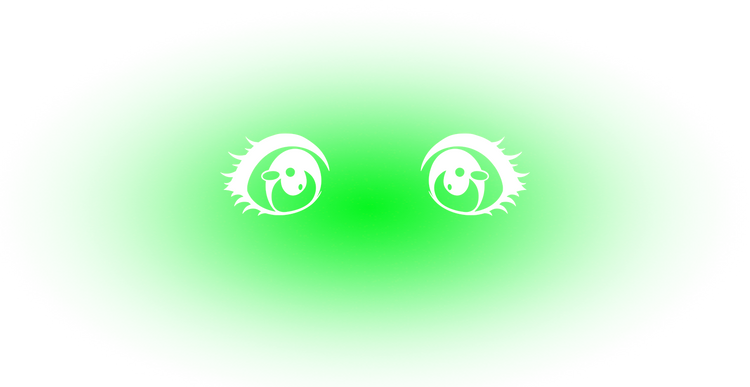
Emma’s Concept Album
by Nat Ruiz
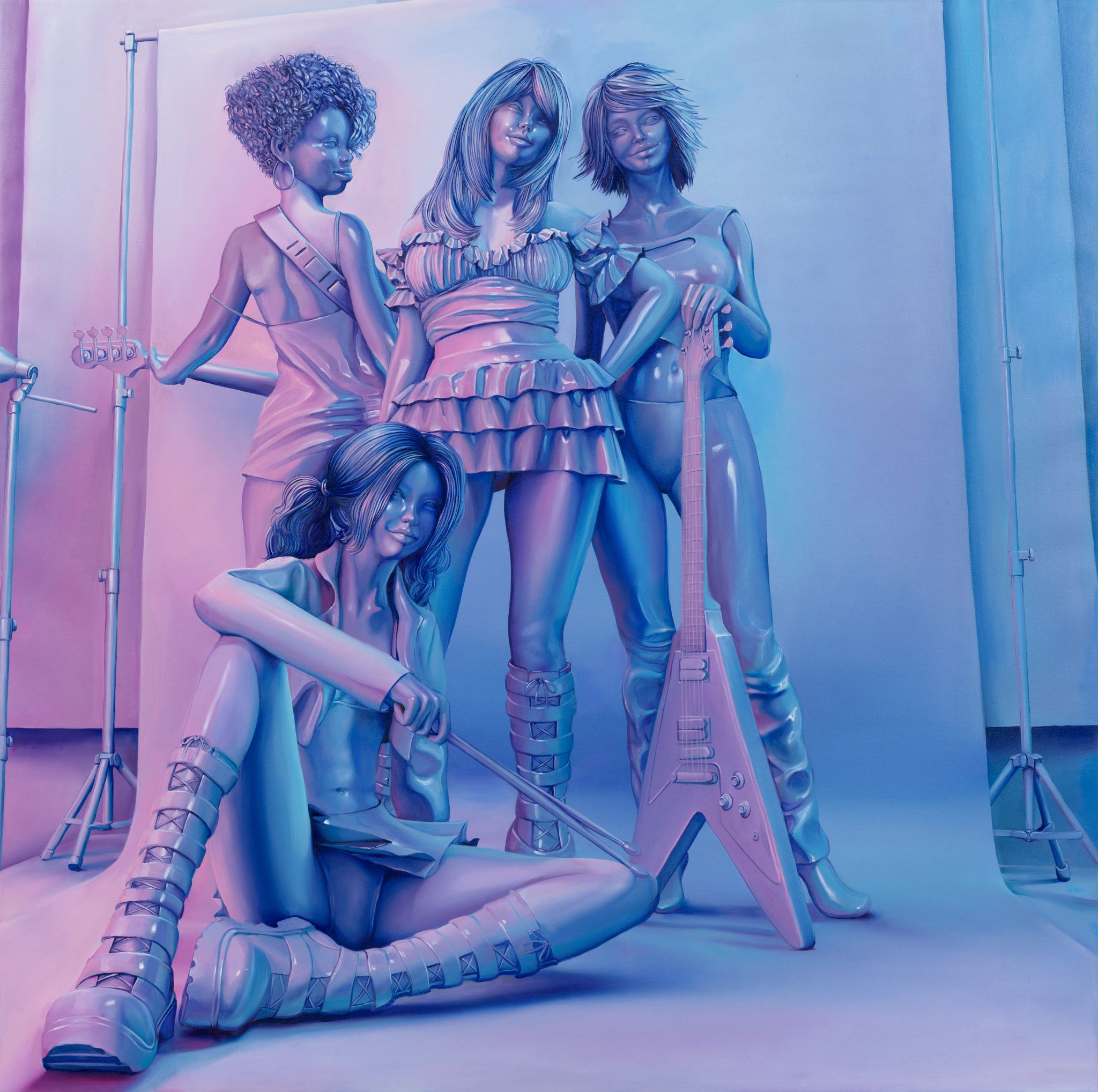
For quite some time, I've assumed the role of an avid observer, peering into Emma Stern's volcanic realm via the Instagram window. From the fragments of her digital tapestry, I meticulously constructed a portrait of her as a person of razor-sharp wit, infused with a beguiling sense of humor. The prospect of finally meeting someone you've admired from afar often carries an air of trepidation, a nagging question: will they align with the carefully sculpted persona that resides in your mind? In Emma's case, she wasn't just aligned, she exceeded every expectation.
Nat Ruiz: Hey Emma! Sorry for just FaceTiming you. Is this too invasive?
Emma Stern: Well, I just exfoliated my face. So, I’m shiny, but all good. [laughs] How are you?
NR: Oh I haven’t even showered so I look terrible. Doing alright, just came back from a walk with Lupe. How’s London?
ES: It’s been great... I mean, I haven’t really had much of a summer. I’ve been working 6 days a week. This is my vacation, I guess.
NR: Setting up for your upcoming show?
ES: I’ve actually been finishing up some paintings out here but I’m also working on a written piece that will probably not be ready by the time we open, which is fine. It can drop a week into the show or something.
NR: Is this written work aiming to provide context to the art, or is it an entirely independent piece in the show?
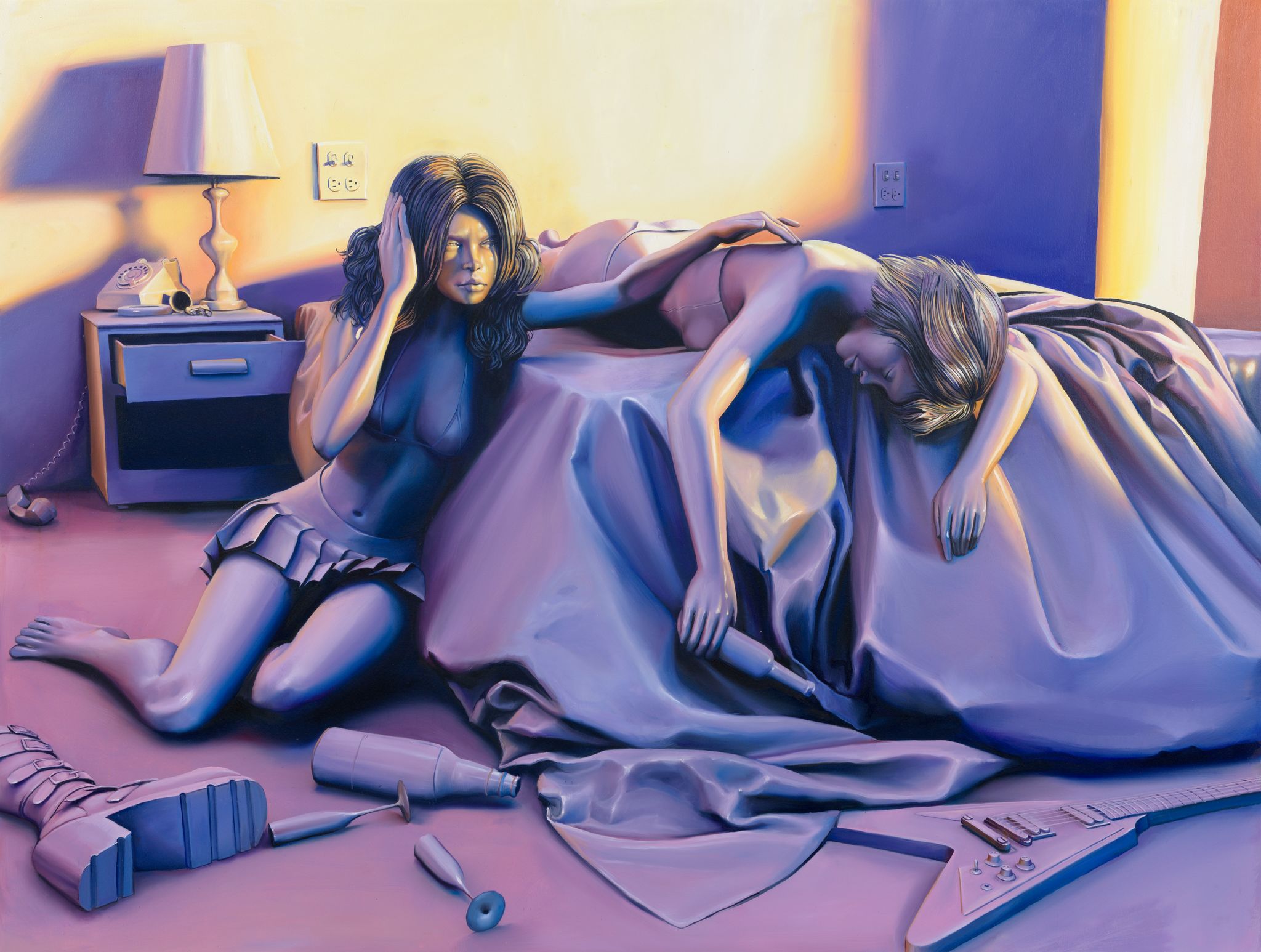
ES: The idea was to have hard copies, but it might be better if we do a separate book drop. It might be too much if we do 8 paintings, 4 videos and a book all at the same time – so we might save it for halfway through the show. The whole show is based on a fictional all-female rock band, and there’s a whole narrative in my head, and now I just have to write it down.
NR: So the written piece is the story behind this rock band?
ES: Yes, like a little novella. The story has been written in my head for almost a year, and now it’s mainly cleaning it to a point where it’s coherent. It’s hard, but also really fun, it’s like the best job ever.
NR: I wanted to ask you about the name of your show, Penny & The Dimes: Dimes 4Ever World Tour, what does it mean?
ES: I’m calling the show “my concept album”. Penny & the Dimes is the band. The world tour part is because I was very ambitious in the beginning and wanted to do a viral marketing campaign, pretending there was a real tour. We scratched that, but I kept the name.
NR: Does the band have music?
ES: No! No audio. Everyone keeps asking “where’s the audio?” and there is none. And I like that, but not sure what others think of that.
NR: That’s very Forever. We launch literary magazines and explicitly say NO READINGS for the events.
ES: I like that a lot. The story that I'm writing has this scifi element to it, about aging and dying, so forever is a big theme in it. So when you reached out, it was like, this is kind of perfect.
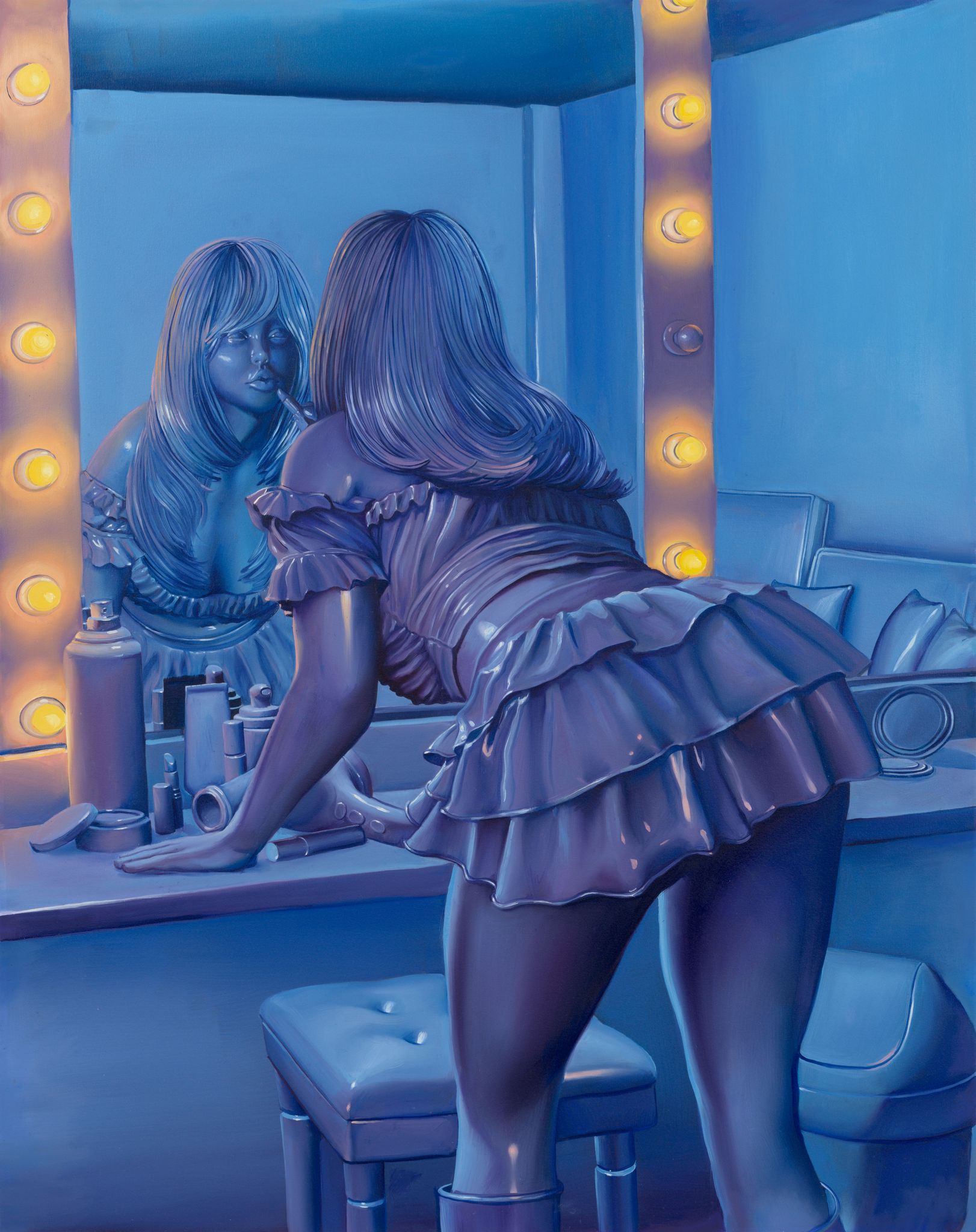
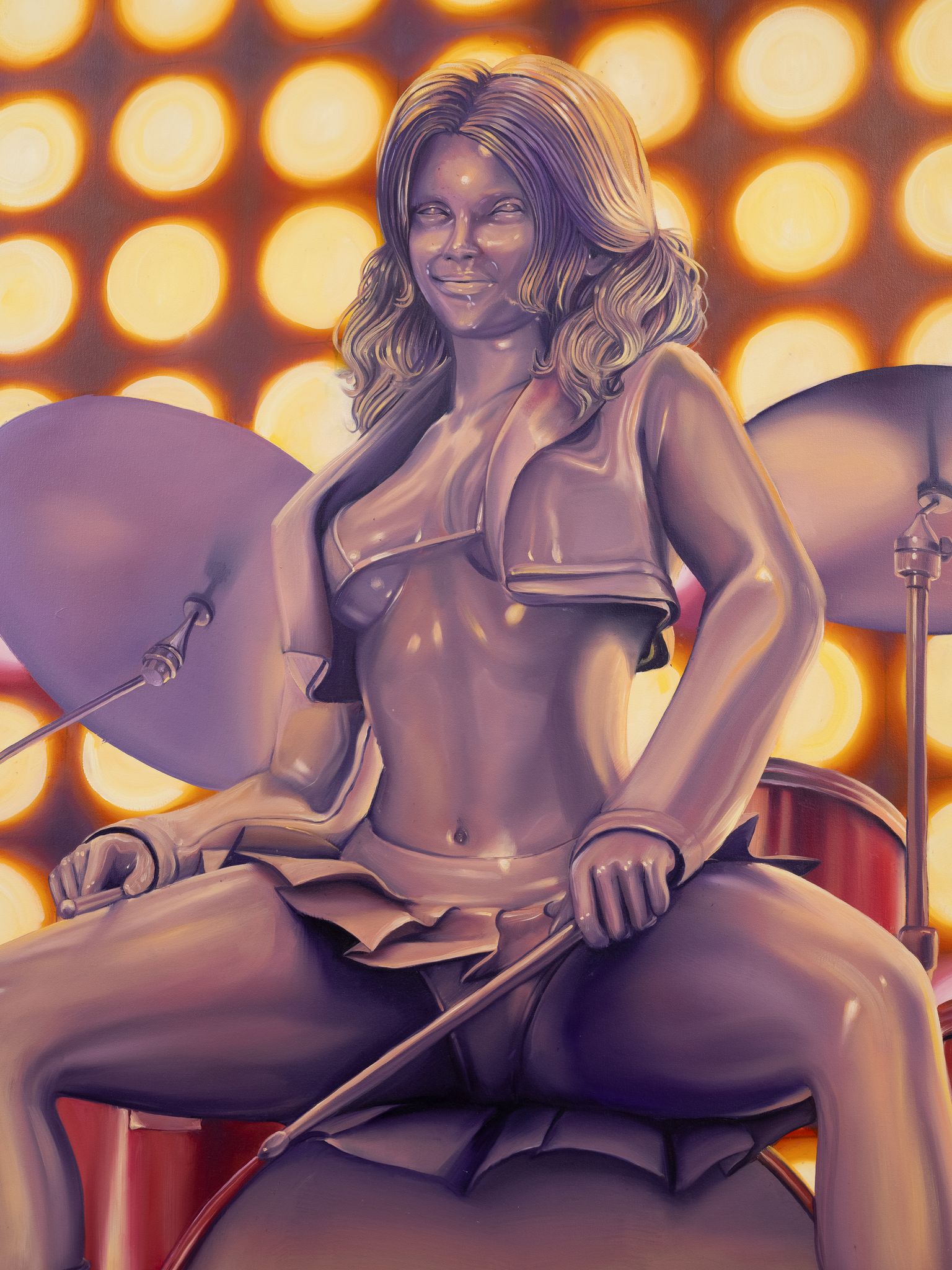
NR: What inspired your sci-fi characters?
ES: While my inspirations are varied, the primary visual language ties back to the tools I use. My characters, or "lava babies" as I call them, are avatars. I build them with a software commonly used for 3D porn, which influences the aesthetic. I view them as part of a larger universe — it's like a world-building project, and in some ways, also self-portraiture.
NR: I've seen your social media posts where you strike poses similar to your avatars — there's a striking blend of majesty, femininity, and strength. Are these traits drawn from your characters, or do the characters mirror aspects of yourself?
ES: It's a bit of a "chicken or the egg" situation. I'm not sure if I began painting them to resemble me or if I started emulating their style. There's a deep-rooted bond in art history between the artist and their muse. Initially, I was intrigued by linking the muse to the avatar, and then evolving into one's own muse. That concept is the heart of my work, with everything else growing from there.

NR: Your artwork has such a unique signature — from the color palette and glossy texture to the depiction of the female form and sci-fi characters. If I stumbled upon one of your pieces, I'd instantly recognize it as yours. Has this always been your style, or did it evolve over time?
ES: The female form has always been central to my work, primarily because I find it more intriguing to depict, and, naturally, I'm most familiar with my own anatomy. I originally got into Pratt to become a medical illustrator. The field offered two routes: studying medicine and taking illustration on the side, or focusing on illustration and integrating anatomical courses. However, with advancements in AI and software, traditional roles in medical illustration have diminished. By my second month at Pratt, I knew painting was my true calling. But my interest in bodies and anatomy remained.
NR: Has utilizing 3D to craft these avatars always been a part of your creative process?
ES: The transition to 3D was largely due to the limited resources I faced post-graduation. In school, I had the luxury of a live model — in fact, I even worked as one at Cooper Union. Once I graduated, that resource became inaccessible. I hardly had a studio space. However, a designer friend was working on an interior project and kept integrating these 3D human figures for scale. And I was like “Oh! Can you send me those? I’m gonna see if I can paint that.” And what was interesting to me was not that they looked like humans, but that they looked like avatars. But there was no lightbulb moment, it was a lot of looking at things that I like and trying to figure out why it was interesting to me.
NR: Respect. I think it’s easy to know what you like. But to understand why you like that, and then turn it into something that is yours and also good, is almost impossible.
ES: It’s really, really hard! Honestly, when I look back, it feels like a series of unplanned moments that somehow guided me to my current art style. If even one of those moments went differently, I'm not sure where I'd be.
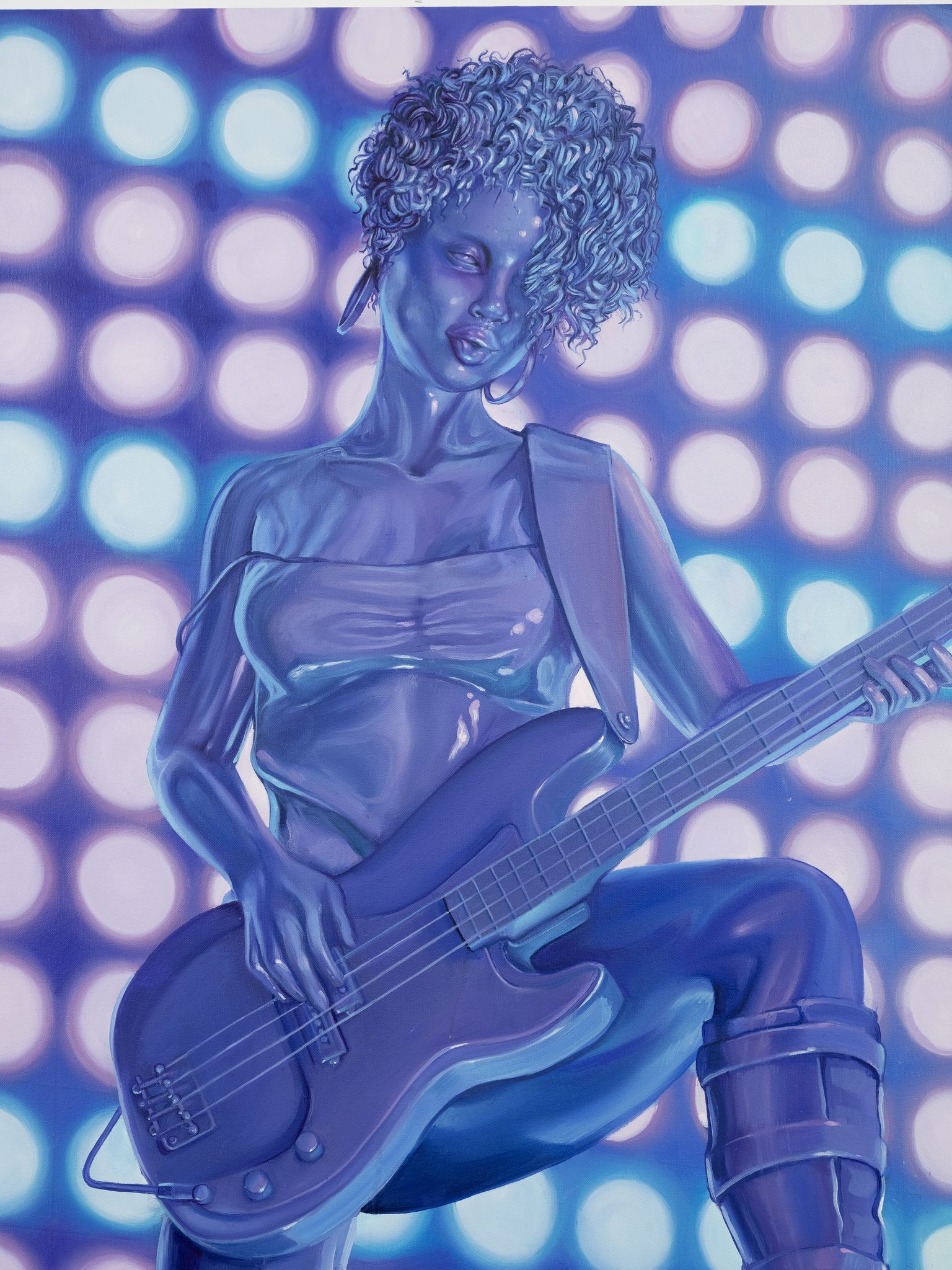
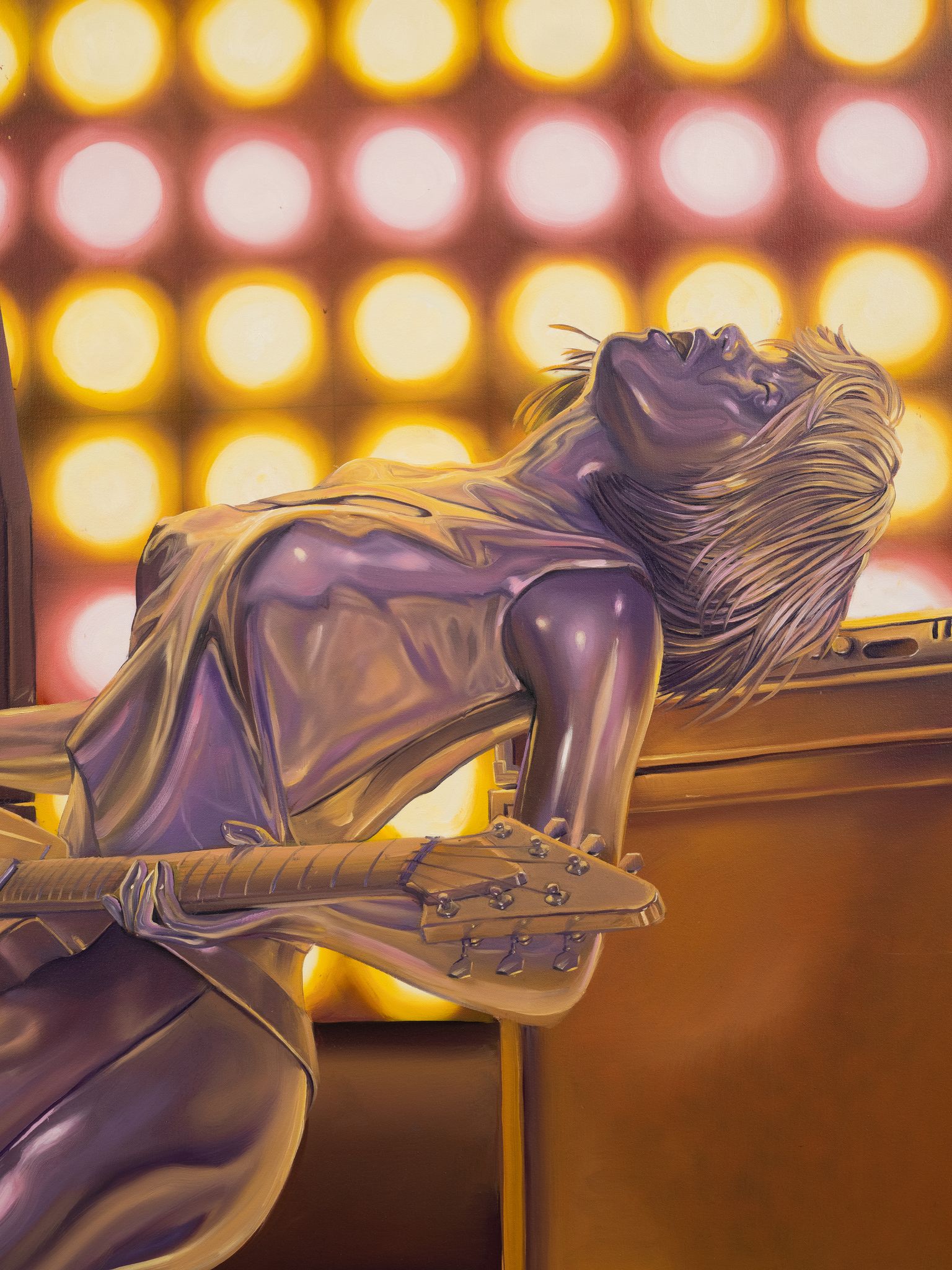
NR: So, where did it all begin? Where did you grow up?
ES: So I grew up in New Jersey. My upbringing was pretty strict and religious, which made teenage me a bit of a rebel. Bad grades and all. But, everyone just kind of knew I was gonna be an artist, so they weren't too hard on me about school.
NR: Do you believe in God?
ES: I’m very agnostic. I feel like there is some kind of intelligent design at play. The universe definitely has some kind of architecture and that’s perhaps why I’m so invested in world-building. I remember someone once saying, “Everything is more beautiful than it has to be, so God must be real.” That thought has stayed with me for a decade, even though I can't recall who said it.
NR: There’s definitely random moments of extreme beauty that make you pause. Like, I watched a plastic bag float still in the air for what felt like forever. Made me question if we're in some kind of matrix.
ES: And isn't it wild how math always works? If the math is off, it's your equation that's wrong, not the numbers! It's mind-blowing to think we're all just data at the core.
Emma Stern is a New York City based artist and painter. She earned her B.F.A. from Pratt Institute, Brooklyn, NY. Her work has been showcased in esteemed venues such as Half Gallery, New York; Carl Kostyál, Stockholm and London; Almine Rech, Paris and London; and Konig Gallery, Berlin.
Nat Ruiz is an artist, illustrator, and designer living in Portland, Oregon. She is the creative director and designer of Forever Magazine.

